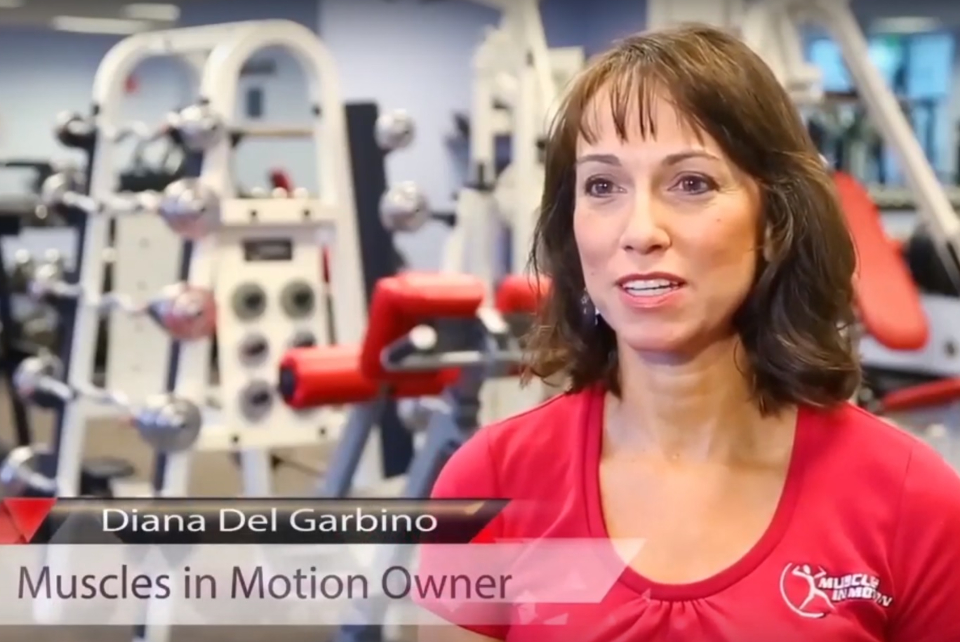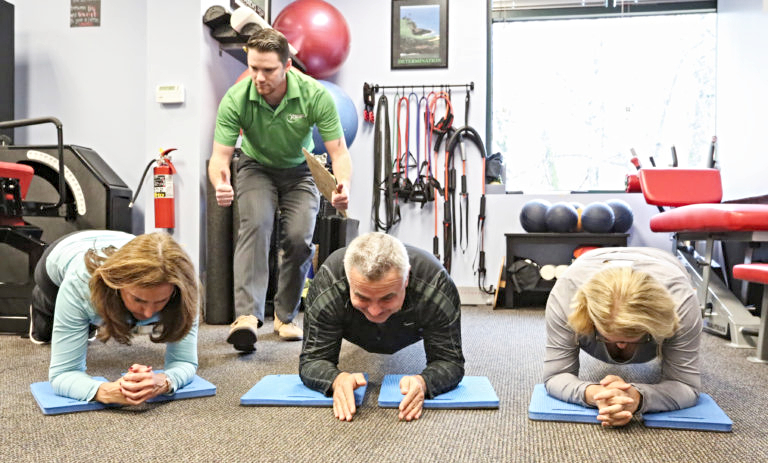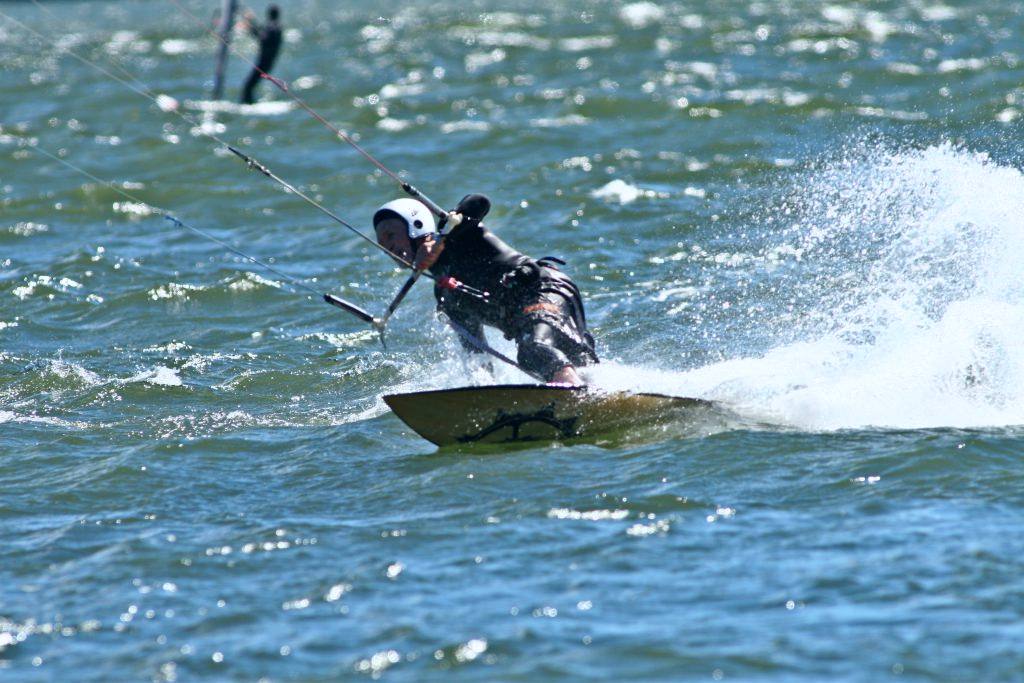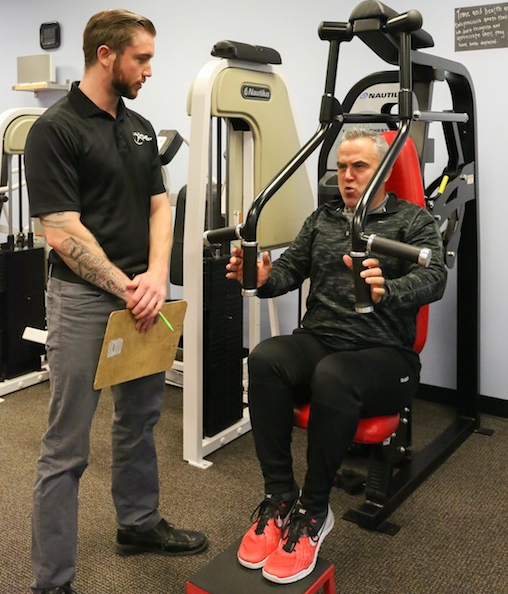How can 30 minutes of exercise twice a week turn back your genetic clock, make new brain cells, save your heart, and prevent osteoarthritis?
Dr. Noel Peterson, Oregon Regenerative Medicine Medical Director
Of all the lifestyle factors affecting longevity, exercise continues to lead the pack. In fact, researchers with the Veterans Affairs recently completed a study of 15,860 men, and found that after 7 ½ years, those who were “highly fit” had an all-cause 50% reduction in mortality, and “very highly fit” men had a 70% reduced all-cause mortality when compared to men of “low fitness”. That’s right, fitness confers a 50%-70% reduction in the risk of dying from any cause!
Can you spare 30 minutes twice a week?
Now that we know that exercise can turn back your body’s clock, how do you work it into your busy life? I have learned that by exercising with the slow burn method, I can build muscle mass, gain the cardiovascular fitness I need for other sports, and stay free of nagging injuries, just by resistance training for 30 minutes twice a week. This can leave lots of time for the other activities you love: Yoga anyone? Kitesurfing?
Studies show that regular exercise is associated with the ability of our genes to repair themselves and to turn back the clock on biological age
Do the Slow Burn

Slow motion weight training builds muscle mass and fitness faster than any other method. DelGarbino went on to say studies have shown that men and women following a slow-motion strength training regimen achieve 50% to 100% faster strength gains than those following a traditional weight training program.
When doing the slow burn, you perform very slow motion repetitions until complete exhaustion (burn) of all three types of muscle fibers occurs. Each rep takes 15-20 seconds and are performed to total failure of the muscle. By completely exhausting these fibers, muscle growth factors are released, building muscle. Once your muscle fails, you move on to the next muscle group.
Regular exercise stimulates new cells to be made in the area of the brain that are important for memory and learning
Fitness without stressing your heart and lungs

Almost all the benefits from aerobic exercise do not come from exercising your heart and lungs. Fitness gains actually come from increased peripheral muscle mass and the resultant increased metabolic efficiency.
Your heart already contracts about a 100,000 beats a day. That’s 35-million “reps” a year. Do you really think your heart needs to work any harder? In fact, overwork of the heart can cause a disease cardiologists call “exercise-induced cardiac hypertrophy”.
A slow burn builds all your muscles far more efficiently than aerobics, without stressing your heart. With slow burn workouts your muscles become more metabolically efficient, they utilize oxygen more efficiently. Efficient muscles place less demand on the heart, and your exercise capacity increases.
Slow Burn exercise has been found to protect joints from osteoarthritis and to reduce work-related repetitive strain injuries.
Younger genes?
Does regular exercise actually lower the age of our genes? Genetic researcher Lynn F. Cherkas, Ph.D., of King’s College London, has found that regular exercise results in longer telomeres on our chromosomes and these longer telomeres are associated with the ability of our genes to repair themselves and to turn back the clock on biological age.
More brain cells?
Brain researcher Dr. Astrid Bjørnebekk at the Karolinska Institute in Sweden has discovered that regular exercise stimulates new cells to be made in the area of the brain important for memory and learning. So now we know that exercise not only builds more muscles, exercise gives us longer, younger telomeres and more brain cells to boot.
What about osteoarthritis and injuries?
Best of all, slow burner exercisers have far fewer repetitive motion injuries, and gain greater benefit from their exercise—all in less time. Studies have shown that the common joint disease osteoarthritis is mostly a sign of accelerated biologic aging. Slow Burn exercise has been found to protect joints from osteoarthritis and to reduce work-related repetitive strain injuries.
Dr. Kenneth Cooper, the “father of aerobics” has said, “You should change your focus on exercise as you age—you need to save those joints and concentrate more on building muscle and less on aerobics.”

Aging is not for the weak!
Del Garbino claims that muscle size is not the best measure of fitness, and that you can have big muscles and still not be strong. She cited a study by Dr. Jeremy Loenneke, PhD., from University of Mississippi, who determined that muscle size was not as important as muscle strength. “His study reported that men with high levels of both muscular strength and cardiorespiratory fitness had 60% lower death rate compared to men who were unfit with lower muscular strength and cardiorespiratory fitness, regardless of muscle size.”
Is a Slow Burn workout all anyone needs?
No, but a once or twice-a-week slow burn can serve as your fitness foundation, freeing you up to do the other physical activities that you enjoy. You can walk, hike, bike, play tennis, and any other form of recreation with greater confidence and enjoyment, and reduce your risk of injuries.
I refer patients to Muscles in Motion because they keep constant score of their client’s progress, and the increases in strength results in more energy and a better quality of life. Del Garbino loves her work, and says “We know that the stronger we feel physically, the more space we have to be strong in other ways and other areas of our lives. Life may not get easier, but we can adapt into better ways to handle what life gives us”.
Sound too good to be true? I thought so too—until I worked with Del Garbino and got a lot stronger. So, if you too want to get the most out of your fitness program, I suggest you learn how to exercise smart and consult the experts at Muscles in Motion in Lake Oswego. If you live out of the area, then read one of the following books: “The Slow Burn Fitness Revolution” by Michael Eades MD, “The Slow Burn” by Mary Eades, MD, and Michael Eades, MD, or “Body by Science” by Doug McGuff MD.
With slow burn training, we can get stronger, increase our brain cells, and turn back our biological clock. Can you spare 30 minutes twice a week?
Medicina Sportiva 15 (3): 147-162, 2011 DOI: 10.2478/v10036-011-0025-x Copyright © 2011 Medicina Sportiva
EVIDENCE-BASED RESISTANCE TRAINING RECOMMENDATIONS James Fisher1(A,E,F), James Steele1(E,F), Stewart Bruce-Low1(E,F), Dave Smith2(A,E,F) Southampton Solent University, UK, Manchester Metropolitan University, UK
Abstract
Resistance training produces an array of health benefits, as well as the potential to promote muscular adaptations of strength, size, power and endurance. The American College of Sports Medicine (ACSM) regularly publish a position stand making recommendations for optimal achievement of the desired training goals. However, the most recent position stand (as well as previous ones) has come under heavy criticism for misrepresentation of research, lack of evidence and author bias. Therefore this paper proposes a set of scientifically rigorous resistance training guidelines, reviewing and summarising the relevant research for the purpose of proposing more logical, evidence-based training advice.
We recommend that appreciably the same muscular strength and endurance adaptations can be attained by perform- ing a single set of ~8-12 repetitions to momentary muscular failure, at a repetition duration that maintains muscular tension throughout the entire range of motion, for most major muscle groups once or twice each week. All resistance types (e.g. free-weights, resistance machines, bodyweight, etc.) show potential for increases in strength, with no significant difference between them, although resistance machines appear to pose a lower risk of injury.
There is a lack of evidence to suggest that balance from free weights or use of unstable surfaces shows any transfer- ence to sporting improvement, and explosive movements are also not recommended as they present a high injury risk and no greater benefit than slow, controlled weight training. Finally, we consider genetic factors in relation to body type and growth potential.
Key words: muscular strength, bodybuilding, intensity, genetic
147




